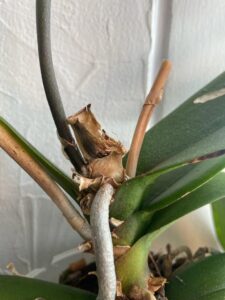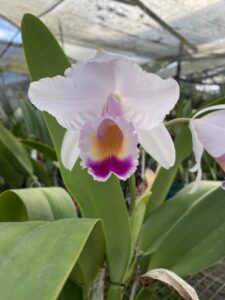An orchid in its natural state often has its flower spike pointing in different directions. However, when we have it in a planter, it’s advisable to tie it to a support in order to keep it upright. This should be done before the flower buds open, as the weight of the blossoms can cause the spike to lose its orientation.
These supports are small sticks, stakes, or rods made of wood (bamboo), metal, or plastic. They typically have a pointed end to facilitate insertion into the plant’s substrate. The most recommended supports are Orchitutors, which are straightened and olive-green-painted wires that are easy to install. They should be used along the entire flower spike of the Phalaenopsis orchid to prevent bending or breakage.
When inserting the support into the substrate, you must be very careful not to damage the orchid’s roots. Insert it on the side of the plant where the flower spike is growing. To secure the spike to the support, you can use small hair pins or soft wire (such as the wire found in bread bags). If your plant has multiple flower spikes, it’s recommended to have individual support for each of them.
You can purchase the tutor on our website or in our stores in Cali and Ginebra. If you have any questions, you can visit our stores, where our staff can provide more suggestions. Additionally, we have all the necessary accessories for your orchid cultivation, from Orquitutor to Orquimedio (substrate), decorative bases, Orquiabono, planters, and many other things.





